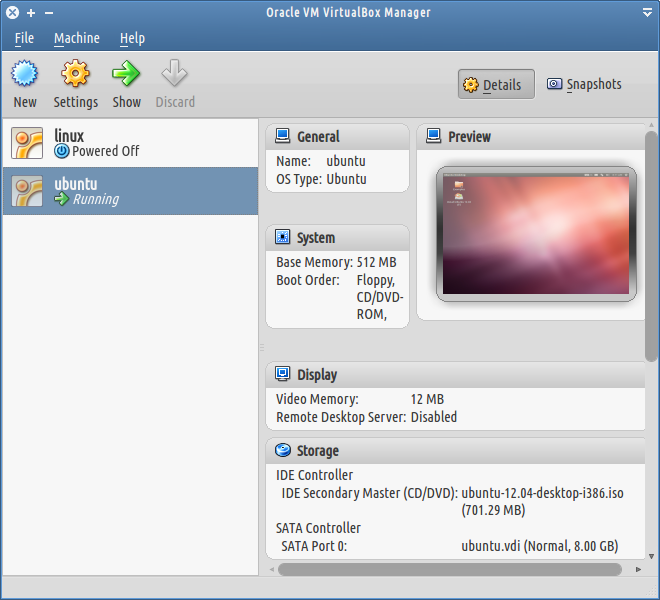

- #Ubuntu mini iso install xubuntu how to#
- #Ubuntu mini iso install xubuntu for mac#
- #Ubuntu mini iso install xubuntu mac os x#
- #Ubuntu mini iso install xubuntu software#
- #Ubuntu mini iso install xubuntu password#
There is a complaint that xscreensaver is old (the message disappears after a few seconds). I found no problem with the default boot. I installed a minimal system (32-bit), tested it, and then ranĪnd a working Xubuntu Core system was created. Please be sure to include the bug number when you submit your result. If an action fails, or produces an unexpected result, please submit a 'failed' result and file a bug. If all actions produce the expected results listed, please submit a 'passed' result.
#Ubuntu mini iso install xubuntu software#
The base installation finishes The Software selection screen appears Select Xubuntu minimal installation with the space bar and press enter Select Yes to install grub boot loader to master boot record and press Enter You should see a request to confirm date and time Select Yes to setting your clock to utc and press Enter You should be requested to remove the CD / USB key Remove the CD / USB key and press Enter This should then reboot the machine Log in and check the desktop is installed Download the Ubuntu Mini CD iso file for Ubuntu 18.04 and earlier from the link on the Ubuntu Documentation Installation Minimal CD webpage. Thus, the computer will boot in BIOS compatibility mode, and the installation will be in BIOS mode. You can check and see if it is working by switching to tty4 Select to not install updates. The mini iso lacks the proper files for booting the computer in UEFI mode. The install may seem like it has locked at a percentage but is actually working in the background.
#Ubuntu mini iso install xubuntu password#
Select the layout you wish to use on the keyboard and press Enter The default for your location and language should already be selected Add a hostname for the machine and press Enter Choose a mirror dialogue displays Select an Ubuntu mirror HTTP Proxy screen displays Either enter proxy information and continue, or continue leaving blank Install continues You should be prompted for your name Type in your name and press Enter You should be prompted for a user name Type in your user name and press Enter (you can accept the default if you wish) You should be prompted to enter a password Add a password and press Enter You should be prompted to confirm ( If you entered a weak password, confirm that you want to keep it or select no and enter a stronger one) Confirm password and press Enter You should be asked if you wish to encrypt your home directory Select No for encrypted home directory and press Enter You should see confirmation of your time zone Verify that the pre-selected time zone is correct or select your time zone and press Enter You will be presented with formatting options Select Guided - use entire disk and press Enter You should see an option to select a disk to install on Select the disk to use and press Enter You should be asked to confirm the action Select Yes to accept the changes and press Enter This test will check installation of xubuntu minimal with tasksel Boot the image Select Install and press Enter Select Language screen displays Select your language System displays 'Select Location' Select location and press Enter The default for your location and language should already be selected.
#Ubuntu mini iso install xubuntu how to#
Video tutorial to replace the HD of a Mac Mini <= Watch it to know how to replace the HD.Proceed in your native language if you wish. Things to do after installing Debian 8 <= One may try some of these suggestions - beware that you may risk messing things up and thus need to re-do a Debian install from scratch.Ĥ. Video tutorial of booting up the Debian ISO <= Watch it to know what to do during the installation process.ģ.
#Ubuntu mini iso install xubuntu for mac#
Debian net-install i386 ISO for mac <= a special version of the netinst CD image that is targeted specifically at 32-bit Intel Macintosh machines.Ģ. Here are some links that I have found useful:ġ. I am now using it on my Mac Mini 1,1 as I editing this post. To my relief, the open-source browser Chromium is still available for i386 cpu and it is pretty much identical to Google Chrome from a user perspective. But Google has stopped the support of its Chrome browser for i386 machine. I prefer Xubuntu and thus have chosen the Xfce desktop. Those who prefer Ubuntu could choose the GNOME desktop. There are plenty desktops to choose from including GNOME, Xfce, KDE, Cinnamon, MATE and LXDE.


The Debian net-install i386 ISO for mac installs the base Debian linux only and requires internet connection so that it would download other desktop or server components. Thus my Debian 8.7 is installed on an entire SSD without any issue with dual boot problem.
#Ubuntu mini iso install xubuntu mac os x#
In my case, I have replaced the existing HD installed with Mac OS X by a blank unformatted 64GB SSD. I have now installed Debian 8.7 (pretty up to date) on my MAc Mini 1,1. I thus googled around and found a Debian net-install i386 ISO specially made for mac with one bootloader. Otherwise, the firmware will be confused and the ISO cannot be booted. It says that Mac Mini 1,1 firmware is very choosy - there must be only one bootloader in the ISO. After failing to install Ubuntu or Xubuntu to my Mac Mini 1,1 (very old hardware version) from a Ubuntu or Xubuntu i386 ISO burnt on a DVD, I have stumbled on a webpage with very useful information.


 0 kommentar(er)
0 kommentar(er)
